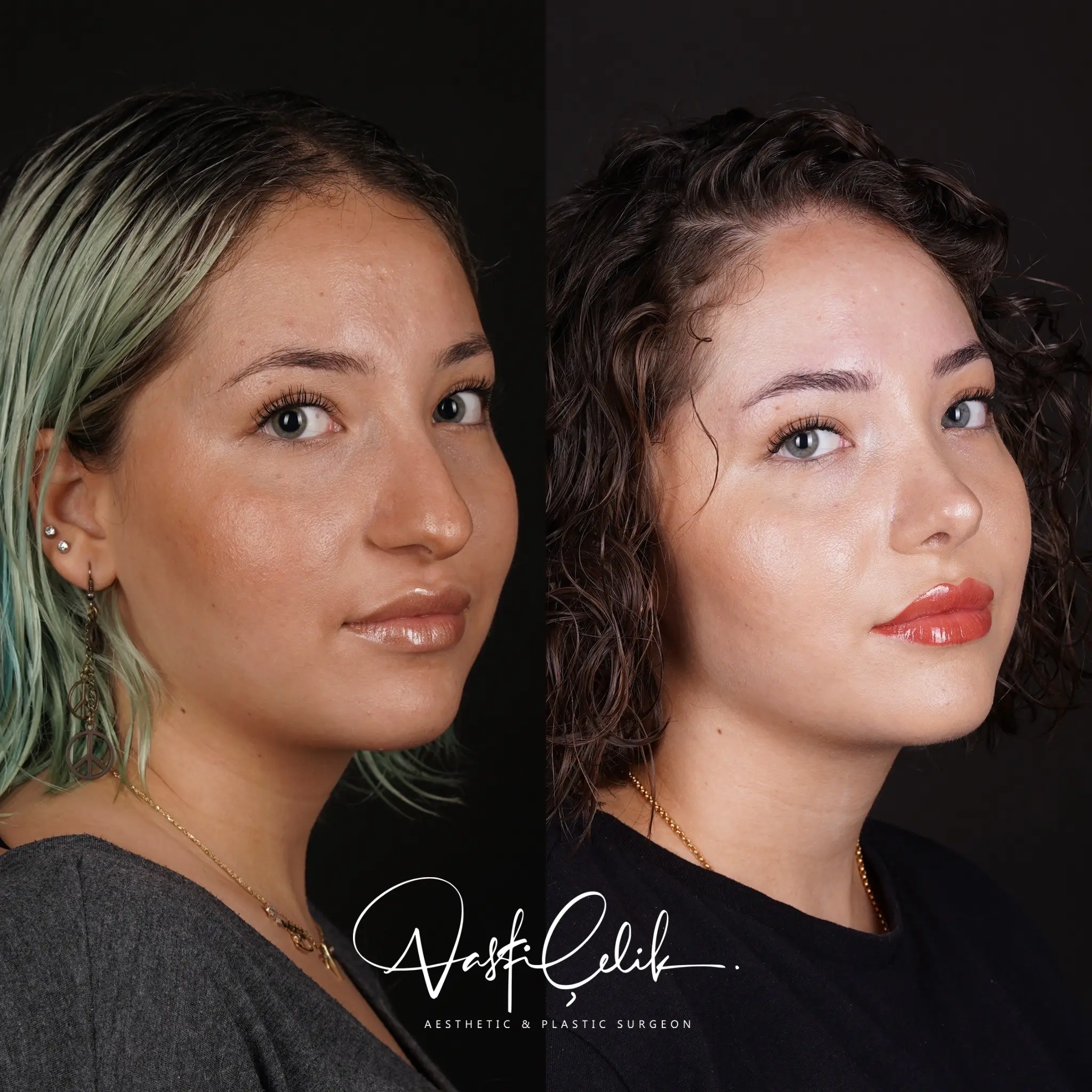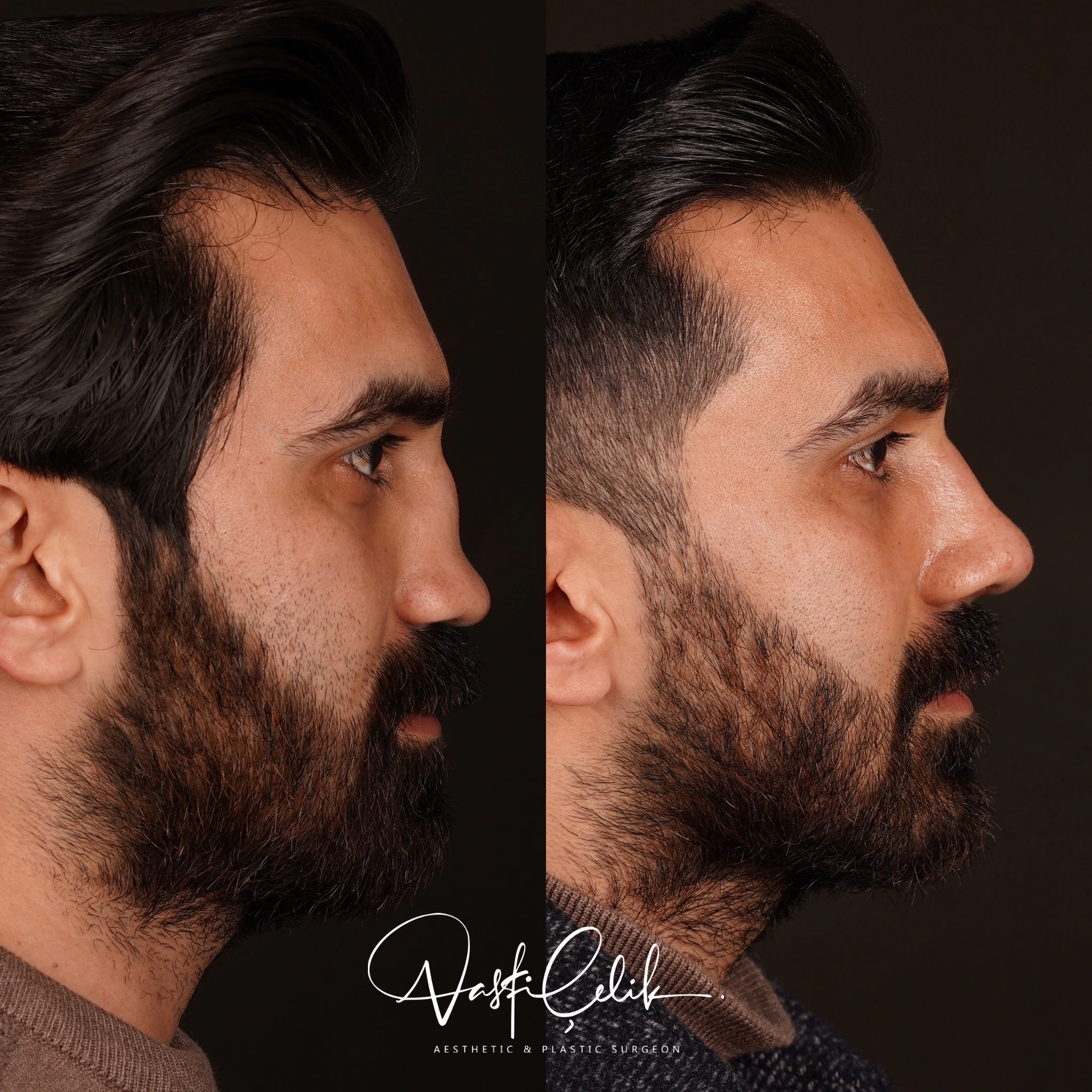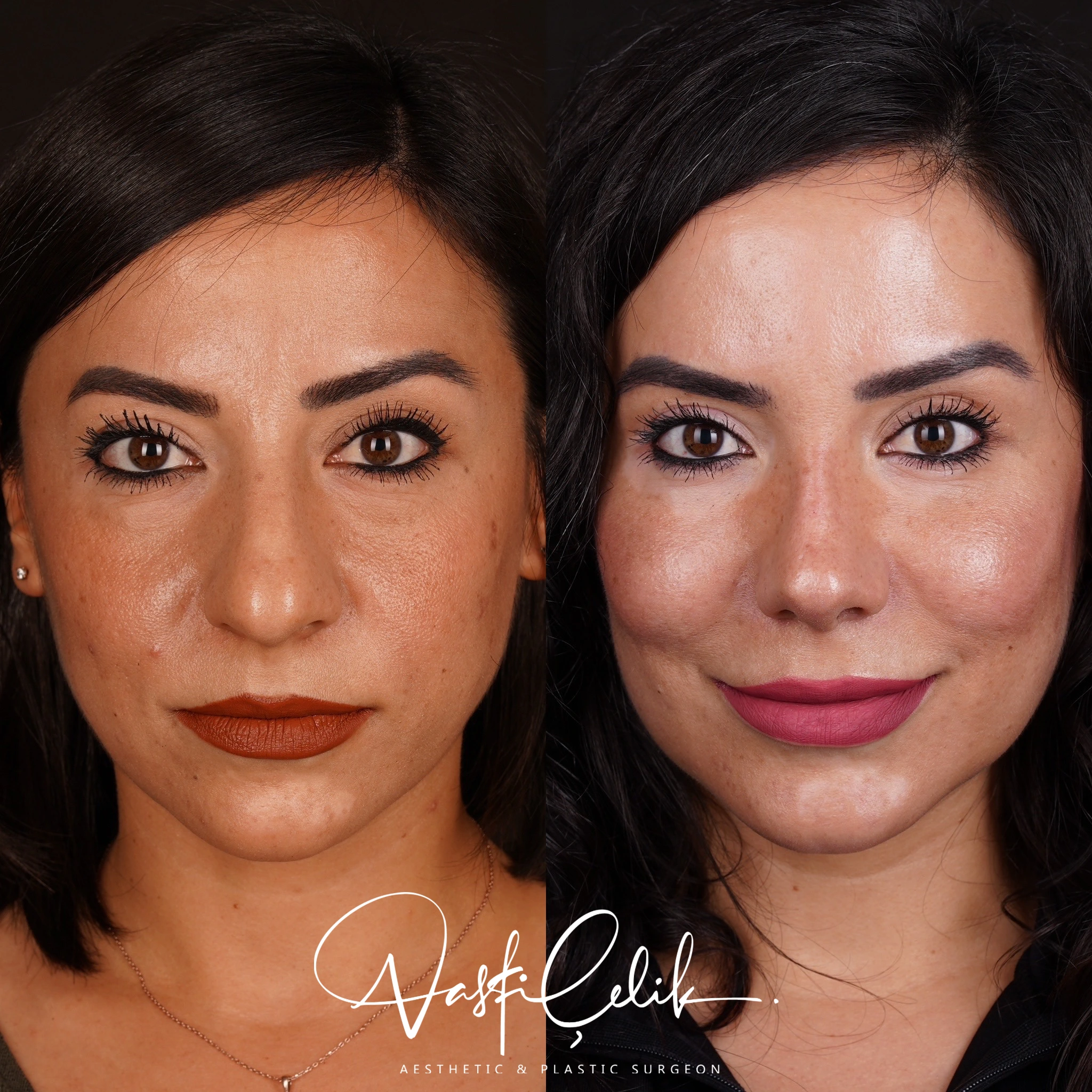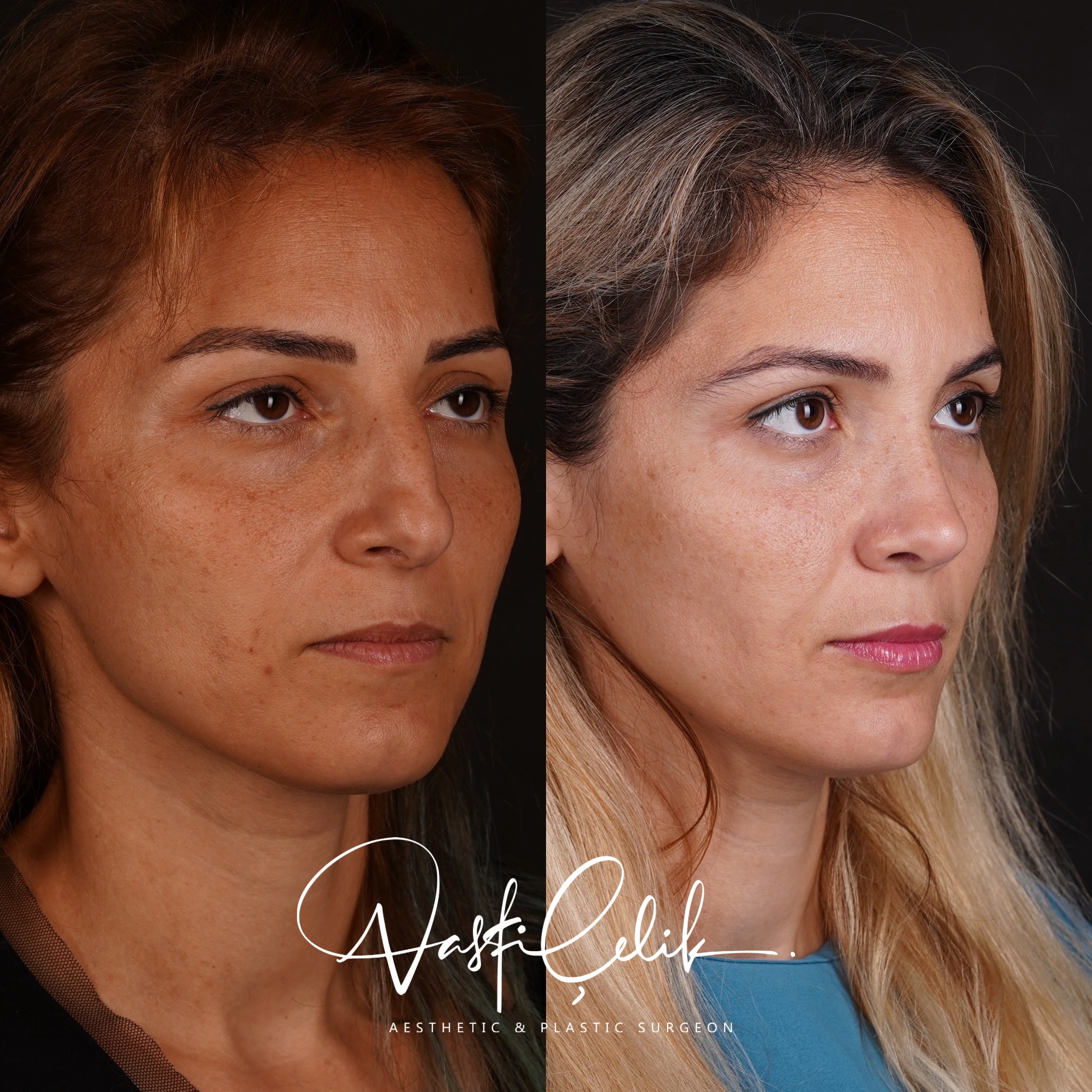REVISION RHINOPLASTY
Revision (secondary) rhinoplasty is a nasal surgery that can be performed on any patient who has had one or more rhinoplasty operation before, and who often wants a correction in the appearance and function of his/her nose. Revision rhinoplasty is commonly considered as one of the most difficult surgical operations among all cosmetic surgery procedures. Replacement of damaged and/or missing cartilage structures removed in the previous surgery usually requires the use of cartilage for the elimination of such and other possible deformities in the nose.
REVISION RHINOPLASTY
Revision (secondary) rhinoplasty is a nasal surgery that can be performed on any patient who has had one or more rhinoplasty operation before, and who often wants a correction in the appearance and function of his/her nose. Revision rhinoplasty is commonly considered as one of the most difficult surgical operations among all cosmetic surgery procedures. Replacement of damaged and/or missing cartilage structures removed in the previous surgery usually requires the use of cartilage for the elimination of such and other possible deformities in the nose.
In which cases is revision (secondary) rhinoplasty performed?
Primary rhinoplasty is a tailor-made surgery, but in the general sense, it is performed to obtain a satisfactory aesthetic appearance, and to improve the functional structure of the nose. However, when results obtained in the nose are structurally and functionally undesirable, the surgery can be repeated at rates ranging from 5% to 15.5% according to the global literature.
The reasons that require revision surgery are generally categorized in two types as minor and major. In cases where a minor revision is needed, minor corrections are made based on the structure and general appearance of the nose, and the patient’s request after the primary surgery. It is surgical procedure that generally involves the correction of slight asymmetries on the nasal tip, nostrils and nasal ridge.
Conditions that require major revision include;
*Disproportion between the nose and the face after the primary surgery
*Nasal collapse due to deformation (deterioration) in the bone or cartilage structure of the nasal ridge
*“Polly Beak” deformity in which the nasal ridge appears arched due to inadequate removal of the cartilage structure in the nasal ridge compared to the removal of the bone structure
*“Saddle Nose” deformity resulted from excessive removal of the cartilage in the nasal ridge
*Nasal septum deviation (cartilage curvature)
*Concha hypertrophy (concha enlargement)
*Narrowed or closed nostrils (alar collapse) resulted from the collapse of the cartilage structures that shape the nasal wings
*Crooked Nose, C-twisted Nose, Twisted Nose
*Scar formation and soft tissue problems in the skin tissue inside or outside the nose, resulted from a surgical incision made during the surgery
*Adhesions in the tissues inside the nose.
Revision Rhinoplasty Before-After
When is Revision Rhinoplasty Performed?
When planing the time of the revision surgery, the most important factor to consider is what the problem is that requires correction according to the result of primary rhinoplasty. Due to swelling in the first 1-3 postoperative months of the rhinoplasty operation, it is not possible to clearly understand whether a revision will be required. It is necessary to wait at least 6 months for the correction of asymmetric formations and slight irregularities in the nose, but it would be more appropriate to wait 1 year for the nose to completely heal and take its final shape.


How is Revision Rhinoplasty Performed?
Facial harmony largely depends on the intricate interaction of the cartilage, bone and soft tissue in the structure of the nose located in the center of the face. When the complex 3D anatomy of the nose and its psychological impact on patients are considered, it can be said that revision rhinoplasty is one of the most challenging surgical procedures performed in the field of plastic surgery.
First of all, the physician examines the patient in detail, who will undergo revision rhinoplasty, makes the aesthetic and functional evaluation of the patient, determines the anatomical location of the deformities in the nose, and then determines the surgical technique that will be used to correct the deformities. Before the surgery, the physician also talks with the patient to learn exactly what the patient expects from the surgery and then explains him/her the possible results of the surgery.
The cartilage tissue called septum in the middle of the nose, which is adequate in the primary surgeries, is usually inadequate in revision surgeries. Therefore, depending on the problems in the nose structure, revision rhinoplasty may require;
Costal cartilage graft (rib cartilage),
Conchal cartilage graft (cartilage taken from the ear),
Septal cartilage graft.
How long does a revision rhinoplasty operation take?
In Revision Rhinoplasty, the duration of the operation varies depending on each patient’s nose and physical condition. However, the duration of the operation generally varies depending on the deformities in the nose and the technique to be used in the surgery that the physician will determine after the examination (such as Open Rhinoplasty, Closed Rhinoplasty, Piezo Rhinoplasty); and besides these, graft removal processes may change the duration of the operation, as well.
Is Revision Rhinoplasty risky?
One of the most important reasons that make this operation difficult and risky is the cartilage and tissue deficiency caused by the previous surgical procedures performed on the nasal structures of patients, who will undergo revision surgery. If there is not adequate amount of cartilage in the nose for the second surgery, cartilage transfer may be required for reconstruction. In addition, the risk of complications increases as the inner nasal structures are intervened. In addition to these risks and challenges, all risks associated with primary rhinoplasty surgery also exist in revision rhinoplasty surgery.
How many times can the Revision Rhinoplasty procedure be performed?
Both primary and secondary rhinoplasty operations are intended to achieve an aesthetic appearance in the nose as well as the best result in terms of health and functionality. Since each patient has a unique nose structure, the number of operations varies, and depending on the problems that occur or recur in the nose structure, the operation can be repeated where the physician deems necessary and appropriate after a detailed post-operative examination.
Revision Rhinoplasty prices
Revision rhinoplasty prices vary from patient to patient, depending on the type of the deformities existing in the nose, the techniques that the physician will use during the surgery, and the graft removal process. You can contact us to get information about the subject and appointment.
Revision Rhinoplasty in Turkey
Turkey offers you a fascinating experience with its thousands of years of history, unique nature and delicious food and beverages. For revision rhinoplasty in Turkey, please check our health tourism page and see how easy & fast the processes can be. You can also check out our page about places to visit in Mersin.





